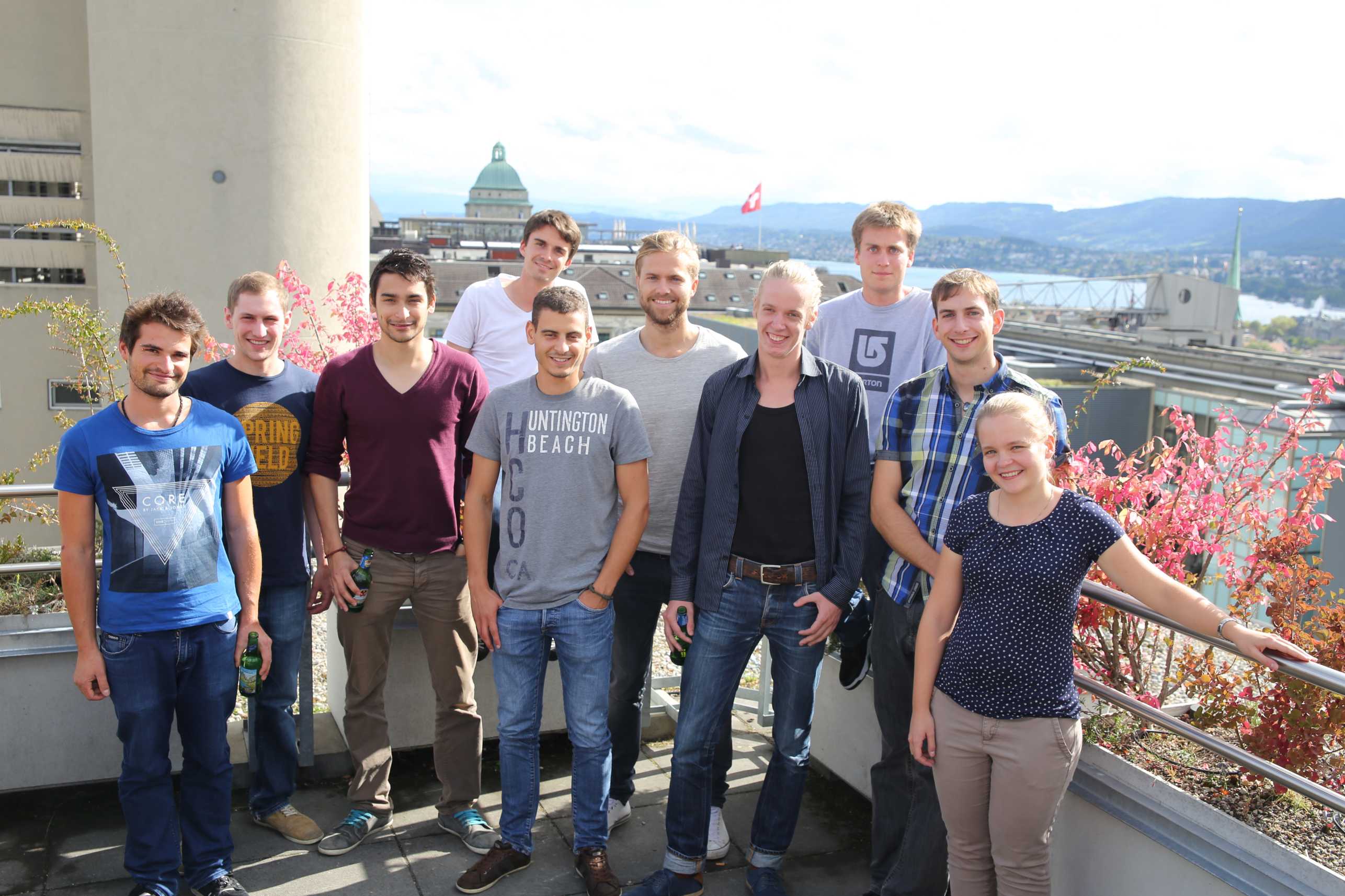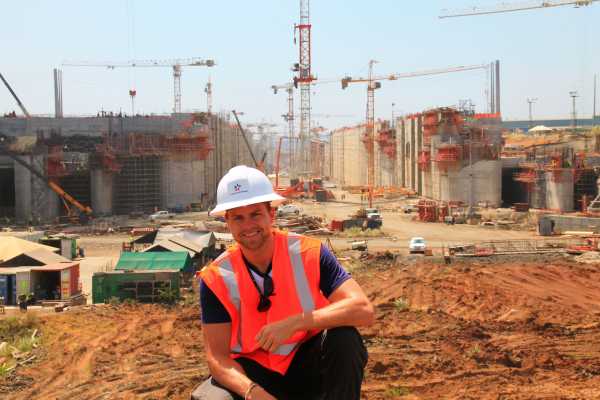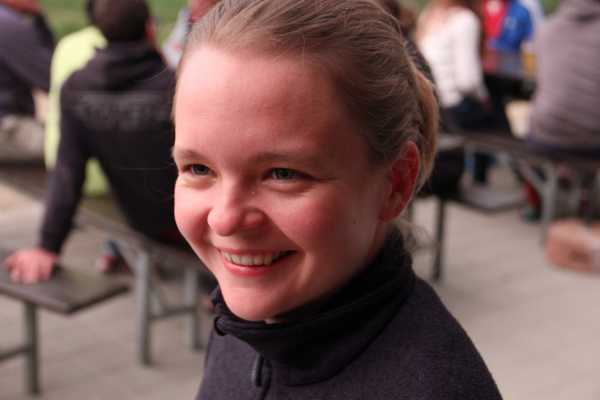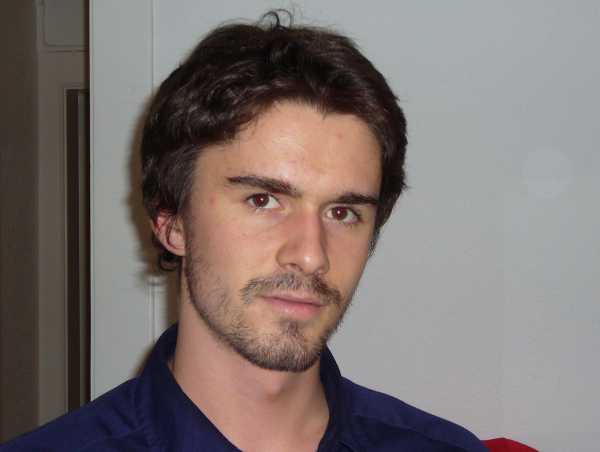MSc Students 2015-2016
David Aeschbacher
Nicolas Berset
Charactrization of fractures, lithology and stress state along boreholes drilled at a deep South African gold mine using core and geophyscial logs
At the Moab Khotsong gold mine from AngloGold Ashanti at external page Orkney, south of Klerksdorp (North West Province, South Africa) a M5.5 earthquake took place on 5th August 2014. The M5.5 earthquake and its after-shocks, which are still ongoing, locate between 3.5 km and 7 km below ground surface with left-lateral strike-slip faulting mechanisms on an unknown geological structure striking NNW-SSE and dipping nearly vertically. Thus, the upper edge of the activated fault is only some hundred meters below the nearest mine workings at 3 km depth. Mining-induced alteration of the state of stress and the causes of mine seismicity in general are hot topics that warrant research in South Africa’s deep mines. Within the frame of a proposed ICDP project external page Drilling into seismogenic zones of M2.0 – M5.5 earthquakes in deep South African gold mines (DSeis) several long boreholes will be drilled downwards from the mining level depth at about 3 km below ground and fully cored with double- and/or triple-tube core barrels.
Download Download the extended abstract (PDF, 388 KB)
Valentin Bickel
Analysis of slope and surface deformation on Mars using HiRISE imagery
This thesis will utilize high resolution spaceborne images taken by NASA’s Mars Reconnaissance Orbiter in order to produce Digital Elevation Models and orthorectified images of selected parts of the surface of Mars. These data will then be used to run Pixel-offset and Feature-tracking codes in order to identify and qualitatively/ quantitatively describe possible recent Martian surface – especially slope - deformations.
In a further step, selected areas will be further investigated from a geomechanical point of view, which could include slope stability analyses, numerical runout modelling and others. These investigations will also be based on data collected by the Curiosity Rover, the Mars Odyssey as well as ESA’s Mars Express.
Jonathan Groeble
Internal damage of compound rockslides (Cerentino Rockslide, Ticino)
The proposed project will investigate the rock structure, internal damage and kinematics of large compound slope instabilities, focusing on the Cerentino landslide in Ticino as a case study. The main aim is to characterize the internal rock mass deformation in detail, locating shear surfaces and zones of relatively intact rock, and relating this damage to the rupture plane geometry and rockslide kinematics. In addition we will determine geotechnical, geophysical and hydrological properties for the various components of the instability. These investigations are based on a new deep borehole which will be drilled in summer 2016, borehole and surface deformation monitoring, and structural field mapping of the surrounding outcrops.
Download Download the extended abstract
Patrick Haedener
Lower bound strength of Migmatic Gneiss for the Finish Nuclear Waste Repository
The design of underground nuclear waste repository requires an understanding of the long-term stability of the rock mass since the nuclear waste must be isolated for up to a million years. Empirical observations (e.g. Martin 1997) and back analysis of underground openings (e.g. Diederichs 2007) suggest that the lower bound rock mass strength should be close to the crack initiation (CI) threshold determined from laboratory compression tests. If CI is the lower bound strength than static load testing should result in samples which do not fail when loaded near CI or lower. One extensive static load data set was developed in the 80’s by Schmidtke and Lajtai (1985) on the Lac du Bonnet granite from Canada, which supported the concept that CI is the lower bound strength. What has not been considered to date is the influence of foliation or bedding on the time dependent rock behavior in the laboratory or in-situ. In this masters thesis the influence of the foliation from magmatic gneisses from the Onkalo underground nuclear waste research laboratory will be tested. The test results will be qualitatively compared to in-situ observations from the Onkalo site to develop an understanding of the influence of the foliation on the time dependent rock behavior.
Download Download the extended abstract (PDF, 461 KB)
Noud Kuilder
The flow of a shear-thinning fluid in a fractured medium: An experimental and modelling approach.
Abstract: Shear-thinning is a term used in rheology to describe a fluid that displays decreasing viscosity when subject to shear-rate (non-Newtonian properties). Many engineering applications related to enhanced recovery system, hydraulic fracturing and remediation take the advantage of specific shear-thinning fluids in their process. This project aims at investigating the flow behavior of a shear thinning fluid in fractured media. The student will specifically examine how rheology and fracture roughness impacts the flow behavior. The project will involve flow visualization experimentation, in collaboration with the University of Lausanne, and modelling applications. The student will receive a unique multidisciplinary scientific training in the fields of flow and transport of complex fluids in fractured media.
Download Download the extended abstract (PDF, 43 KB)
Corinne Singeisen
Kandersteg rock avalanche(s) MSc project
Abstract: Understanding the impact of landslides on mountain valleys both in the past and in the future is dependent on detailed understanding of the factors that lead to the detachment of rock. For prehistoric landslide these factors can only be deduced through detailed study of the landforms and sediments in the deposit and release areas. Isotopic dating is required to understand the timing of events, based on this information triggers such as climate or seismic factors can be evaluated. Notably, direct dating of landslide deposits has revealed completely different map extents than had been deduced based on mapping alone. Hand-in-hand landform dating and detailed mapping in many cases has led to a markedly different event sequence reconstruction. The focus of this study is on the geomorphology, timing, and runout behavior of the Kandersteg rock avalanche(s). With an estimated volume of nearly one cubic kilometer, the Kandersteg deposit is one of the largest in the Alps. Interpretation of exposures revealed during a man-made collapse in 1945 suggested that the Kandersteg might actually comprise two landslide deposits. It was also suggested that the lower older deposit was related to the debris-flow deposits of the region of Frutigen. These were 14C dated in 2005 by Tinner et al. The blocky rock avalanche deposit itself was not dated directly. The goal of this MSc project is to use detailed field mapping, remote imagery-supported landform interpretation, cosmogenic nuclide surface exposure dating, and runout modeling to understand the Kandersteg rock avalanche deposits.
Download Download the extended abstract (PDF, 362 KB)
Elias Strassmann
Characterisation of structural and stratigraphic factors influencing Flysch slopes: the case of the complex deformation of the Kilchenstock slope in Glarus
The proposed project will investigate the mechanisms of failure in Flysch rock masses generally and the stratigraphic and structural controls on the Kilchenstock instability in Glarus in detail, and provide updated geological and structural maps and cross-sections of the slope, based on work completed by previous researchers. Laboratory testing such as Unconfined Compressive Strength (UCS) tests will provide information on important properties, and several permanent GPS stations will give data on movement history over the past year. Finally, numerical simulations will allow interpretation of failure mechanisms and behaviour. The main aim of the project is to better understand the complex Kilchenstock instability and similar Flysch failures.
Download Download the extended abstract (PDF, 386 KB)







